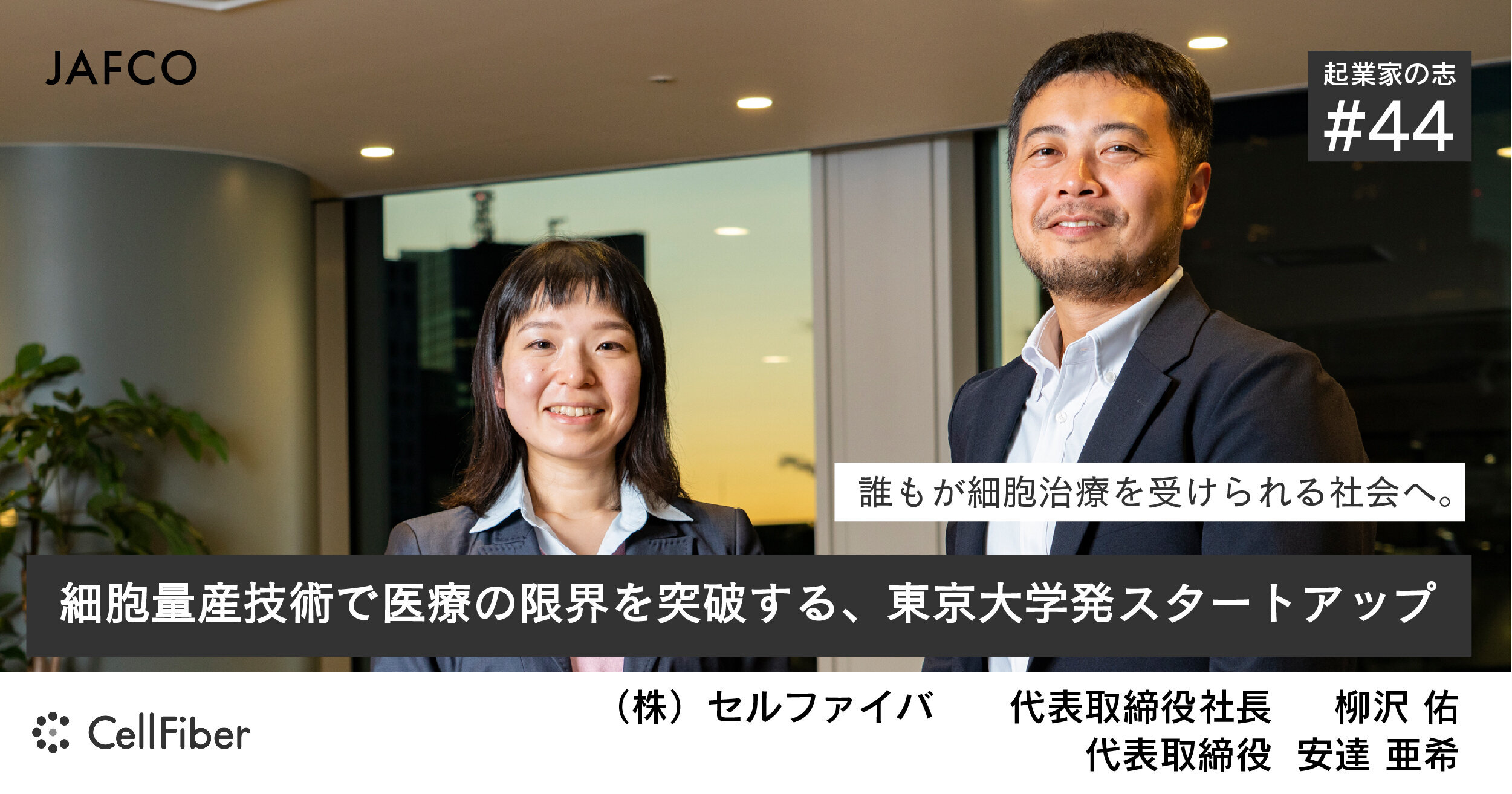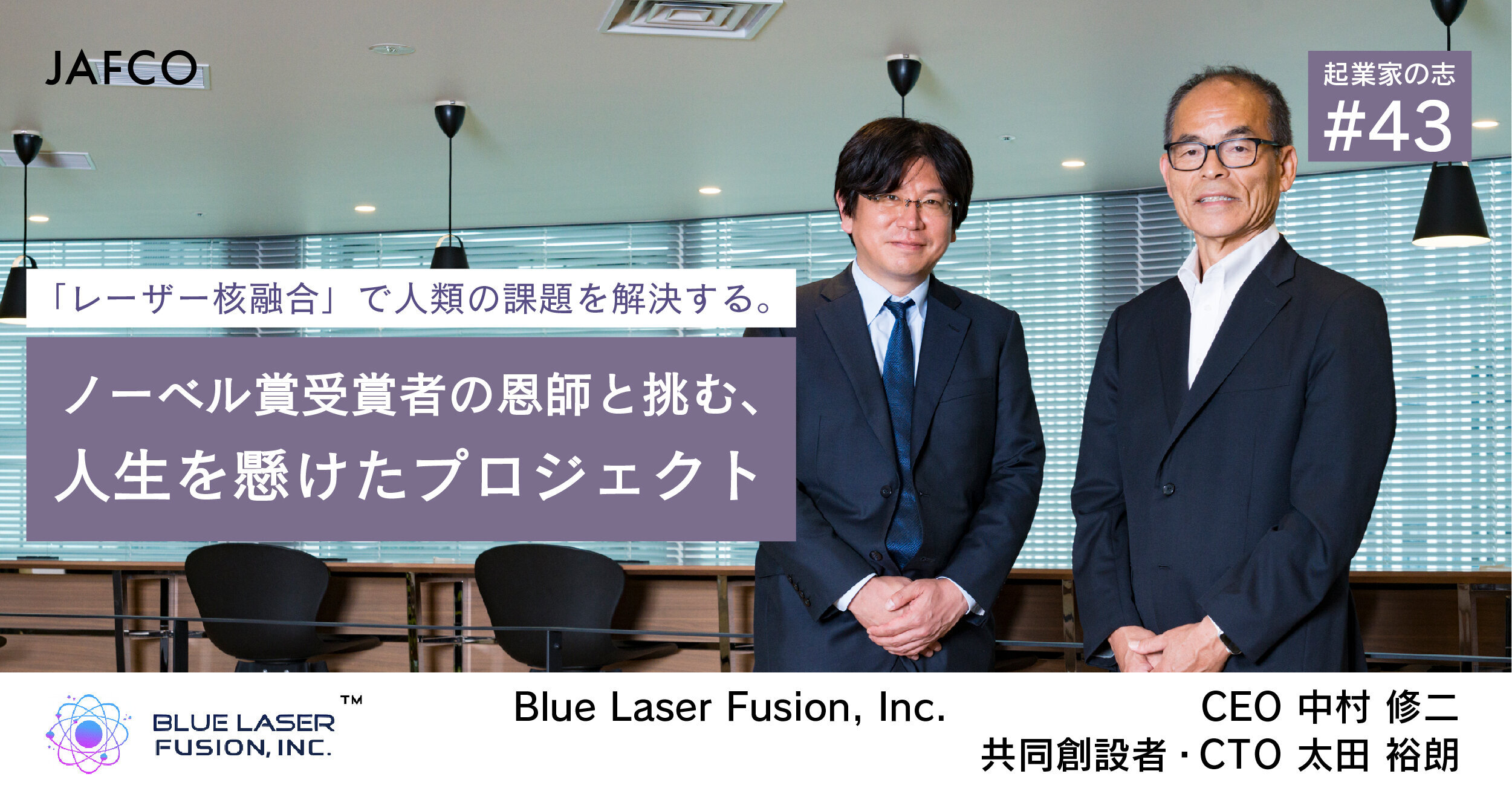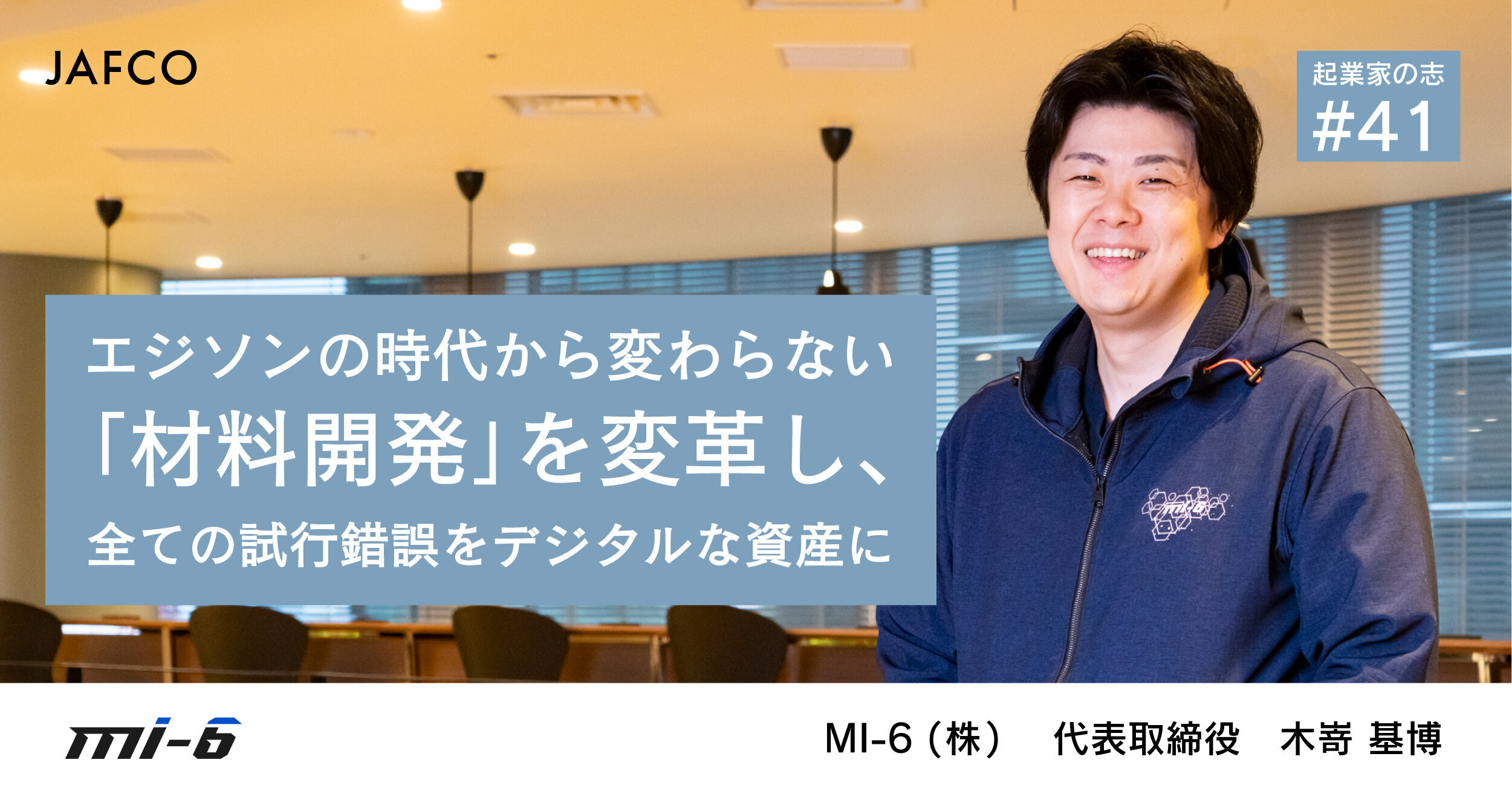In 'Entrepreneurial Spirit,' we delve into the reasons people started their businesses, the initial challenges they faced, and their aspirations for the future.
In our 44th installment, we interviewed Yu Yanagisawa, Representative Director & CEO of CellFiber Co., Ltd., along with Aki Adachi, Representative Director and one of the company's founders, to discuss what they aim to achieve with their business going forward, together with Taira Kobayashi, JAFCO's capitalist in charge.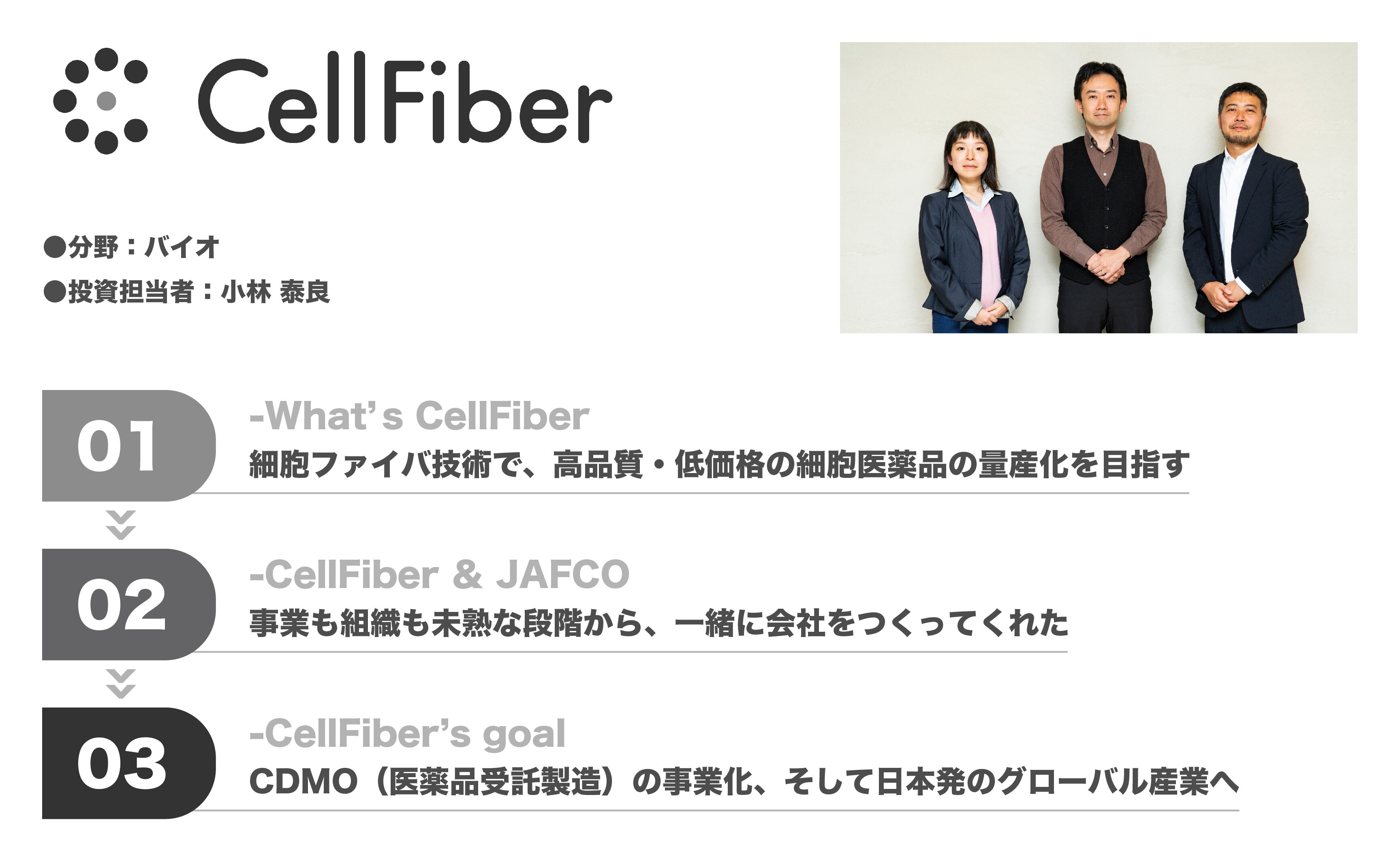
【Profile】
Yu Yanagisawa, CellFiber Co., Ltd.
Mr. Yanagisawa obtained a doctoral degree in chemical and life science engineering from the Graduate School of Engineering at the University of Tokyo. During his studies, he conducted research on functional polymer materials in Takuzo Aida's laboratory. He joined CellFiber in February 2018, became a director in May of the same year, and assumed the position of Representative Director & CEO in June 2019.
Aki Adachi, CellFiber Co., Ltd.
Ms. Adachi received her master's degree in life environmental sciences at the University of Tokyo (Institute of Industrial Science, Masaharu Takeuchi's laboratory). After working in the private sector, she served as the research promotion officer for the JST ERATO Takeuchi Biofusion Project. In April 2015, along with two other members of the Takeuchi Lab, she established CellFiber Co., Ltd. based on the results of the project, becoming a representative director. She currently serves as the person responsible for business infrastructure both internally and externally, representing the company together with Mr. Yanagisawa.
About CellFiber Co., Ltd.
CellFiber Co., Ltd. was established in 2015 based on the cell encapsulation technology developed at the University of Tokyo. It demonstrated the effectiveness of the technology in the mass production of cells and initiated collaborative research and development with pharmaceutical companies both domestically and internationally. The company aims to achieve cost reduction in cell pharmaceuticals through further technological development, aspiring to a society where everyone has access to cell therapy.
Aiming to mass produce high-quality, low-cost cellular medicines with cell fiber technology
─ CellFiber is a Tokyo University startup dedicated to the development of cell mass production technology which is used for cellular medicines. Could you explain what cellular medicines are?
Yanagisawa Cellular medicines are drugs that involve the administration of cells themselves to the human body for therapeutic purposes. They are anticipated to be effective in regenerative medicine and cancer immunotherapy, among other areas. For example, there is a treatment called CAR-T cell therapy, where immune cells are extracted from the blood of a cancer patient, modified to attack cancer cells, and then reintroduced into the body. A notable report is that a leukemia patient in the US who underwent this therapy in 2012 has been living for 10 years without recurrence. This underscores the potential of CAR-T cell therapy for diseases where effective treatments were previously unavailable, leading to increased attention to cell therapy.
However, the manufacturing of cellular medicines is mainly a manual process, and large-scale production is challenging. The cost of these drugs is also extremely high, in the tens of millions of yen, and currently only a few thousand people receive treatment annually. We aim to address these challenges by using cell fiber technology to cultivate cells on a large scale, working towards realizing a society where everyone has access to cell therapy.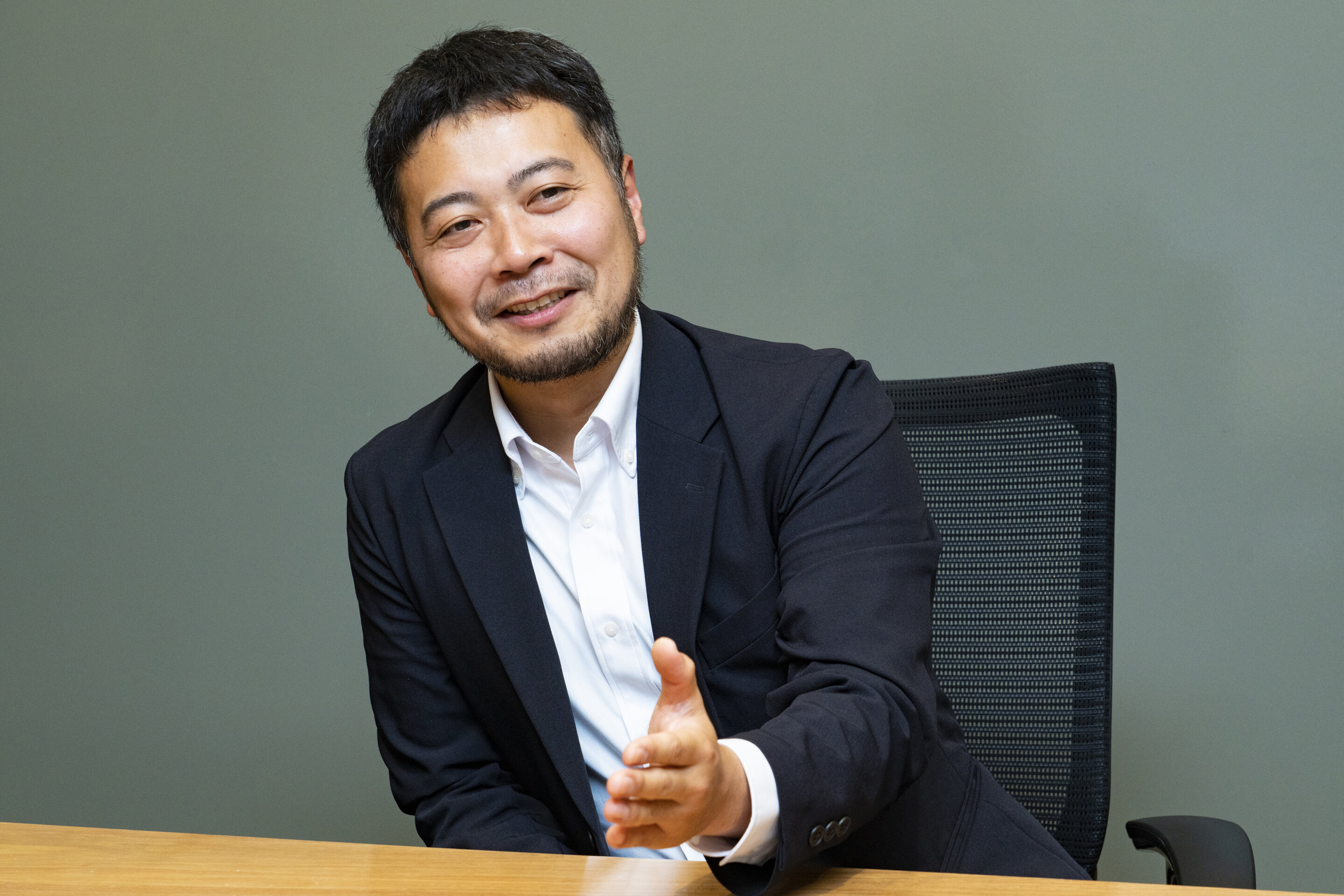 Yu Yanagisawa, Representative Director & CEO
Yu Yanagisawa, Representative Director & CEO
─ I have heard that CellFiber's cell fiber technology is a breakthrough in the mass production of cellular medicines. What kind of technology is it?
Adachi It's a technique that involves encapsulating cells in tubes as thin as hair, made of hydrogel derived from seaweed, and cultivating the cells inside of them. When attempting mass production with conventional cultivation methods, cells often suffer various damages leading to a decline in quality. However, by using cell fiber, we can maintain quality and achieve a scale of production ten times greater than traditional methods. Think of it as similar to nets that protect fruits or houses that protect people from typhoons.
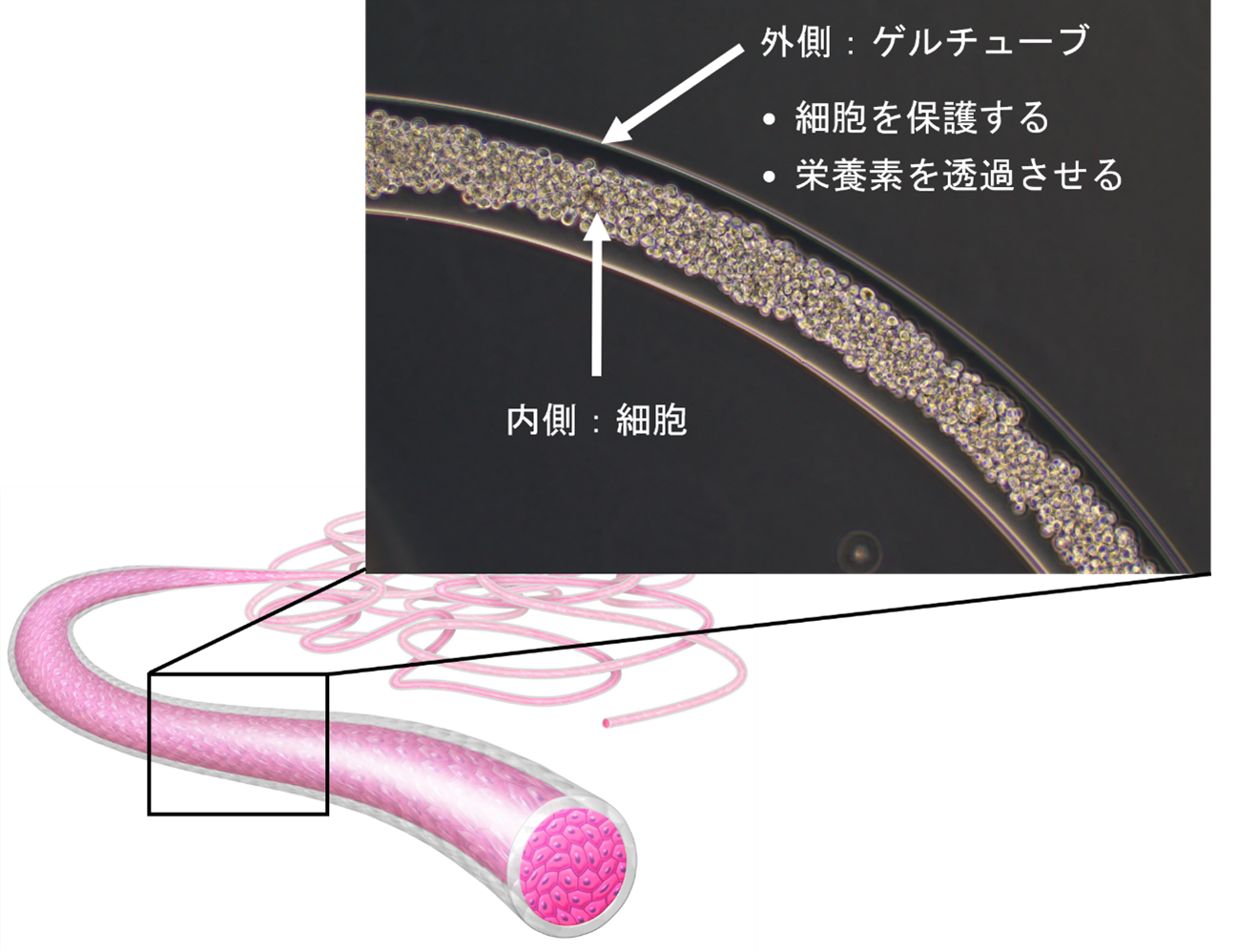
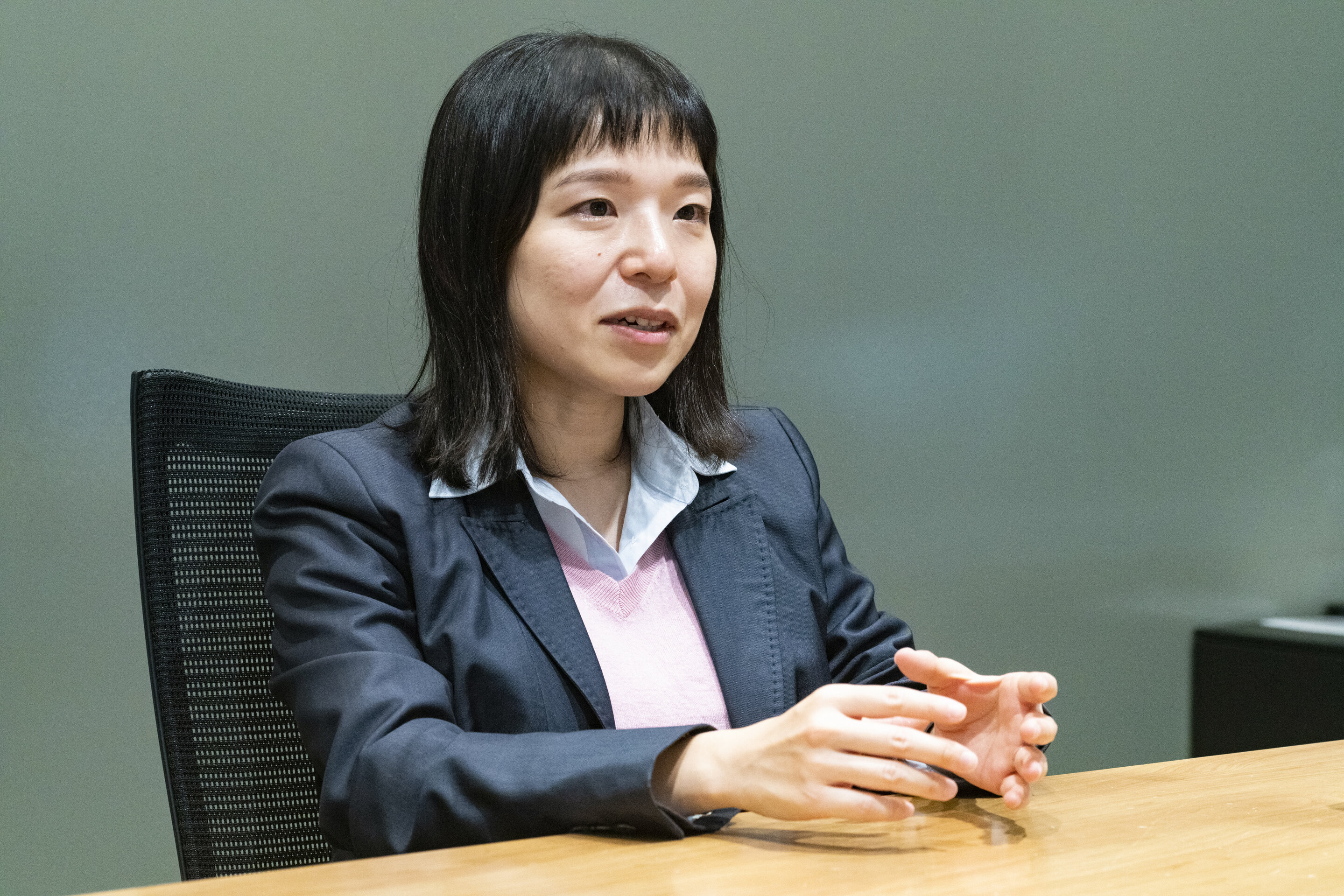
Aki Adachi, Representative Director
─ Has this technology been developed for the purpose of cell culture from the beginning?
Adachi No, originally it was a technology created in the Takeuchi Lab with the goal of using cells to create large-scale structures such as artificial organs. However, living cells are delicate and heterogeneous, making them unsuitable for direct use as industrial materials. Therefore, the approach was to first use cells to create components with specified sizes and shapes, and then assemble them to fabricate large structures. One of the components born from such research is cell fiber. The elongated threads can be stacked, woven, and assembled in various ways, making them an excellent shape.
When a paper on cell fiber was published in 2013, many companies applied for collaborative research. However, at this stage, the application to cell culture had not yet been realized. The anticipated uses were primarily for enclosing human cells in cell fibers as an alternative to animal experiments for investigating the effectiveness of drugs, or embedding fibers into the human body to complement organ functions.
It wasn't until 2017, after the establishment of the company, that a paper was published indicating the applicability of cell fiber to cell culture. From discussions with pharmaceutical companies, we considered that cell fiber technology could contribute to the mass production of cellular medicines. This led to our current business.
─ The strength of your technology and the needs of the market have successfully match. What is the current phase of your business?
Yanagisawa We have established the foundational manufacturing technology for practical-scale production of cellular medicines. In October 2023, we collaborated with Hitachi to unveil a prototype cell manufacturing device oriented towards Good Manufacturing Practice standards for pharmaceutical production and quality control. However, it's not just about creating the device; we also need to implement it in the pharmaceutical manufacturing sites of our customers. Therefore, our focus now is on that process, aiming for practical application at customer sites.
However, the ultimate goal lies beyond this. Starting from 2026, we are considering expanding into a CDMO (Contract Development and Manufacturing Organization) business. We want to advance the business to the point where we can establish our own facility for manufacturing cell pharmaceuticals and ship affordable medicines for 100,000 people annually. Only by achieving this can we come closer to realizing a society where cell therapy is accessible to everyone.
─ If achieved, the widespread adoption of cell therapy seems imminent. Ms. Adachi, could you share the background of how you became a representative director at CellFiber?
Adachi I originally obtained my master's degree in cell fiber technology development at the Takeuchi Lab at the University of Tokyo. After working in the private sector, I returned to the lab in 2014. Around that time, there were discussions about launching a company to commercialize cell fiber technology, and Professor Takeuchi recommended me for the role of president. There was a prevailing image of a president being someone who eloquently articulates a vision on the grand stage. Meanwhile, my role in the lab was more administrative, which caused me some hesitation. However, right after the company was established, the tasks were more about groundwork. With recognition for my practical experience and understanding of both business and technology, I was encouraged to take on the challenge. Since it's such a rare opportunity, I decided to go for it.
─ How did you come to join CellFiber, Mr. Yanagisawa?
Yanagisawa I joined CellFiber in 2018. I studied life sciences at university and then found employment. However, wanting to rediscover something that would become my strength in the field of science, I entered the University of Tokyo's graduate school where I researched materials science, among other subjects. While seeking a workplace where my passion to witness technology actively benefiting society could be fulfilled, I encountered CellFiber and joined the company, feeling the potential of its unique technology.
At the time of joining, certain aspects of the business plan were still not concrete, so I worked with Ms. Adachi to explore the business, meet with venture capitalists, and, despite being a researcher, took on a managerial role. As an extension of this, I became responsible for the business side, while Ms. Adachi handled academic aspects and organizational development. In 2019, I assumed the position of Representative Director & CEO.
The phase where Ms. Adachi took the lead in establishing the company's foundation and core technology was our first phase. The phase where I took the lead in developing cell mass production technology was the second phase. Now, with new funding and entering a new phase, we're essentially entering a third phase. Our commitment is to intensify our business endeavors, driving us closer to realizing our vision.
Building the company's business and organization together from the beginning
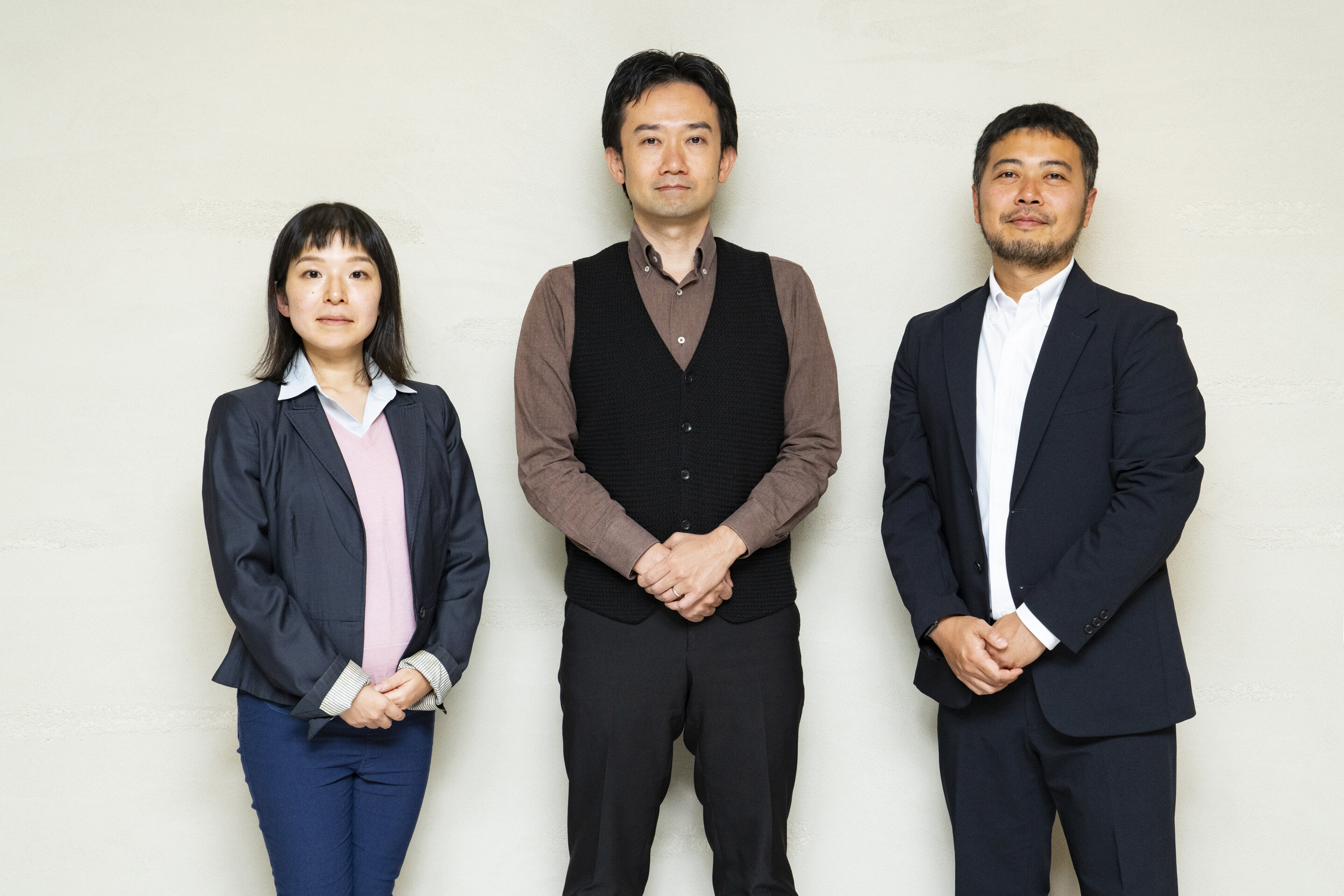
From left: Ms. Adachi, Taira Kobayashi (JAFCO's capitalist in charge), and Mr. Yanagisawa
─ You were able to raise a total of 830 million yen in the JAFCO-led Series A Extension Round by November 2023. Please tell us about the encounter with JAFCO.
Kobayashi I first reached out to Mr. Yanagisawa in 2021. I have been involved in research in various fields, focusing on life sciences at institutions like the University of Tokyo's Institute of Medical Science and Toyota Central R&D Labs. At JAFCO, I am responsible for investing in R&D-focused startups, so I was already paying attention to the activities of the Takeuchi Lab. With both of us having a background as researchers, my first meeting with Mr. Yanagisawa was so engaging that it lasted for three hours.
While I felt the appeal of the technology and Mr. Yanagisawa for investment, at that time, the business strategy was still somewhat vague, lacking a clear answer on how to establish the technology as a business, and so I thought to contact him again about a year later. Then, just about when a year had passed, Mr. Yanagisawa reached out to me, saying they were considering a major fundraising and looking for a lead investor, which led to us having another conversation.
─ Why did you first contact JAFCO when you were looking for a lead investor?
Yanagisawa I've spoken with over 100 VC representatives so far, and when it comes to startups based on technology, and especially when the CEO is someone like me with a background as a researcher, there can be a gap between what the VC seeks and what the CEO can articulate. However, since Mr. Kobayashi is also a researcher by background, I felt no discomfort during our discussions. He patiently lectured on fundamental aspects of business, which left a strong impression on me. I thought that if we could work together, things would likely go well.
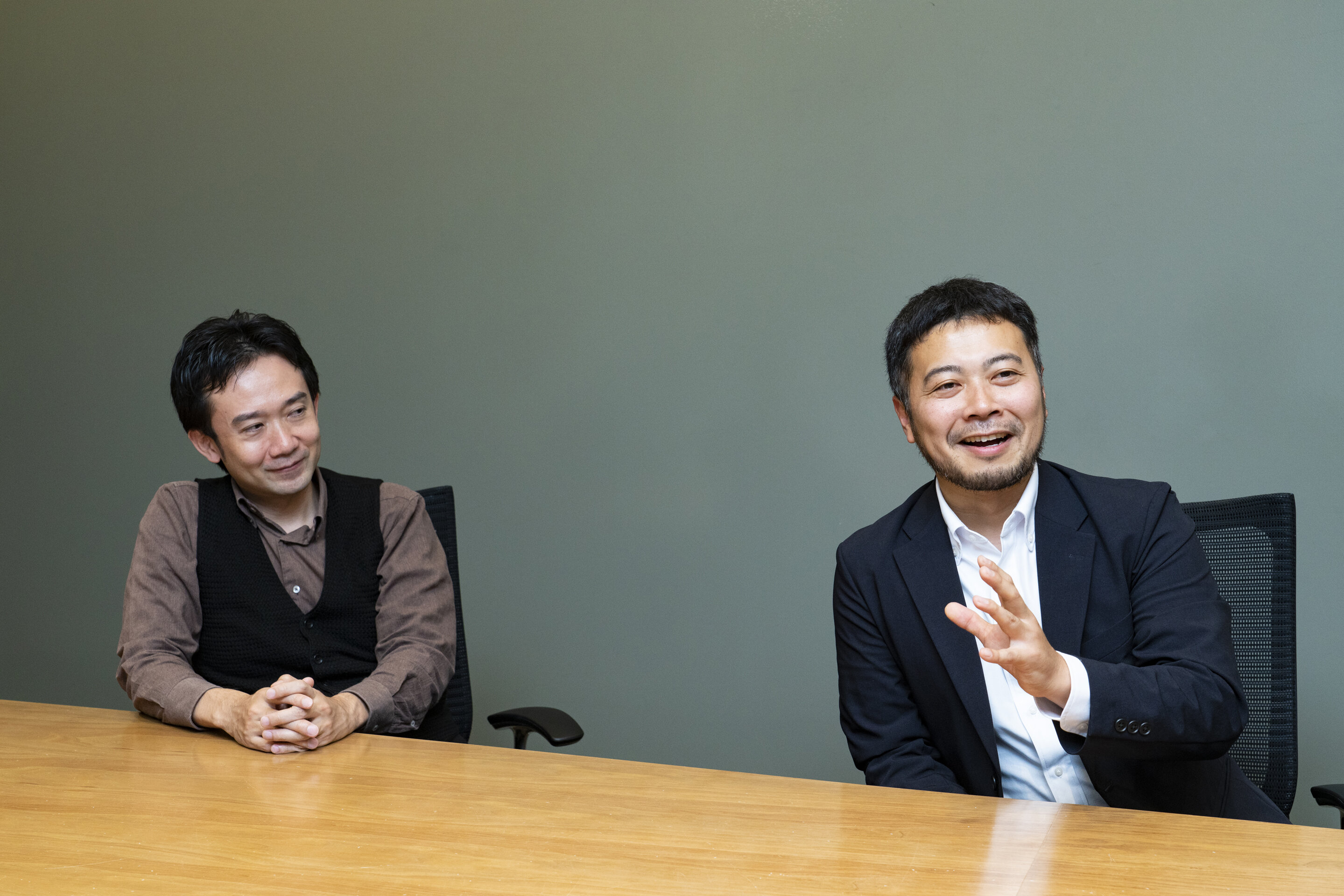
─ So, you both felt a good chemistry from just one meeting. What was the deciding factor that led to the investment when you talked again a year later?
Kobayashi The target market was starting to take shape, and the business was narrowing down its focus toward areas like cell pharmaceuticals and CDMO. However, a common challenge for technology development companies in Japan--and this was true for CellFiber as well--was that the aspect of creating the company's market capitalization as a business was not yet visible. Normally, as you gain a more accurate understanding of the business, the required funding decreases, and the expected market capitalization at the exit increases. However, the fundraising plan I saw at that time gave the impression that the rationale for why this amount was necessary wasn't completely organized.
If we were to invest, I wanted to ensure proper funding, establish a business with a scale well beyond 10 or 20 billion yen in revenue, and grow it into an industry that is globally competitive. This vision was shared by both Mr. Yanagisawa and myself. Therefore, I conveyed the message that they should firstly bring in someone who thoroughly understands CDMOs. I wanted to clarify the strategy, understanding what it would cost to operationalize a CDMO, how much it would require if it were to be acquired through M&A, and so on.
In my experience, Japan is not particularly strong when it comes to making things happen, so finding professional talent in that area is by no means easy. That's why I was surprised when, two months later, I received an email from Mr. Yanagisawa saying that he'd found someone (laughs).
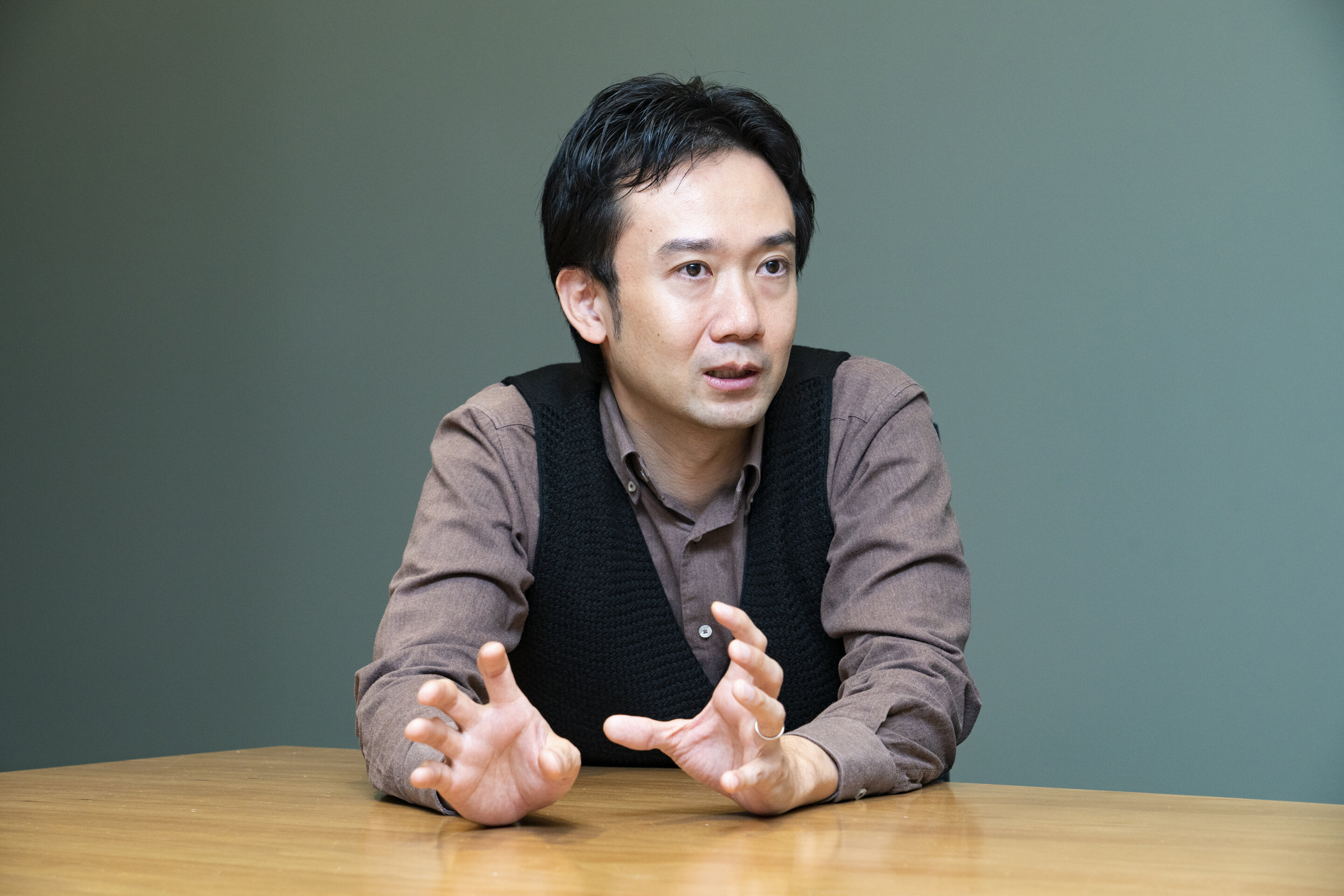
Yanagisawa By chance, I met Mr. Furuishi (Kazuchika Furuishi, now Board Director & CSO at CellFiber) at a trade show, and he happened to be a professional in CDMOs. Moreover, he had just stepped down as a director from his previous company. So, I immediately consulted with him and brought him on board. I've always been incredibly lucky (laughs).
Kobayashi After meeting in person and talking for about 20 minutes, I was convinced that with these two individuals it would be possible. From there, we kept in close contact, progressing discussions on business strategy and negotiations with existing investors. Six months later, the path for investment became clear.
─ Mr. Yanagisawa, please also tell us why you ultimately decided on JAFCO as your lead investor.
Yanagisawa Mr. Kobayashi sincerely engaged with both the business and the organization from the early stages. I felt a sense that we were building the company together, so I wanted him to continue to accompany us. Also, when I asked Mr. Tomotake Kitazawa, a partner at JAFCO, about the investment assessment during our meeting, he mentioned qualities like not giving up and consistently doing what needs to be done. It felt like I could see the face of JAFCO as a whole, not just Mr. Kobayashi. At that moment, I vividly remember gaining a clear image that we could continue to do well together.
CDMO commercialization and a global industry originating from Japan
─ What are your plans for the future after the fundraising?
Yanagisawa In the immediate future, we will concentrate on the technical demonstration of our ability to supply cells that can be administered to humans in cooperation with a CDMO. After that, we will work toward manufacturing cellular medicines at our own facilities, which I mentioned earlier. As our organization has become stronger, I am able to see more clearly than before regarding issues facing our company in developing our business globally as well as my own issues as a manager. Therefore, I'm able to move forward while analyzing the current situation more precisely
Adachi I will be taking maternity leave and, upon returning to work, I will continue to lead the company's growth in the areas of recruitment and information dissemination. For recruitment, we plan to actively hire technicians who can establish services for the success of our clients' projects. I will continue to push forward while maintaining my will to grow with the company.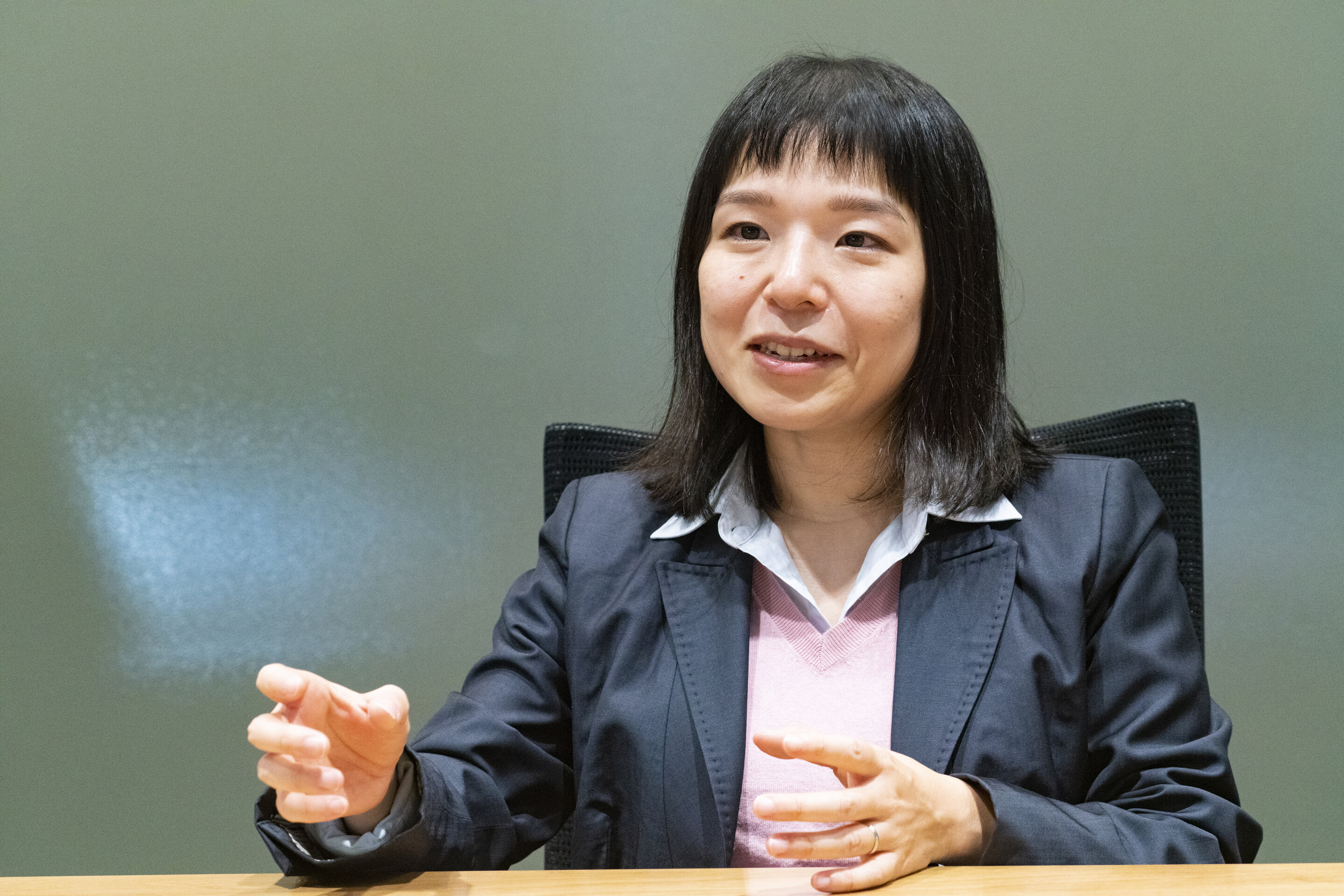
─ In closing, Mr. Yanagisawa, please tell us about your thoughts and feelings as a director, having gone from researcher to top executive.
Yanagisawa As I became involved in management, I realized that the process of startups validating business models is similar to the research process. Mr. Kobayashi said that I'm doing a "social experiment," but when viewed in that light, I feel that researchers and managers are not so different.
I have a mission to establish our technology as a globally recognized industry originating from Japan and to set the standard for cell therapy. I am determined to work on this with a sense of commitment until our technology proves its value to society. 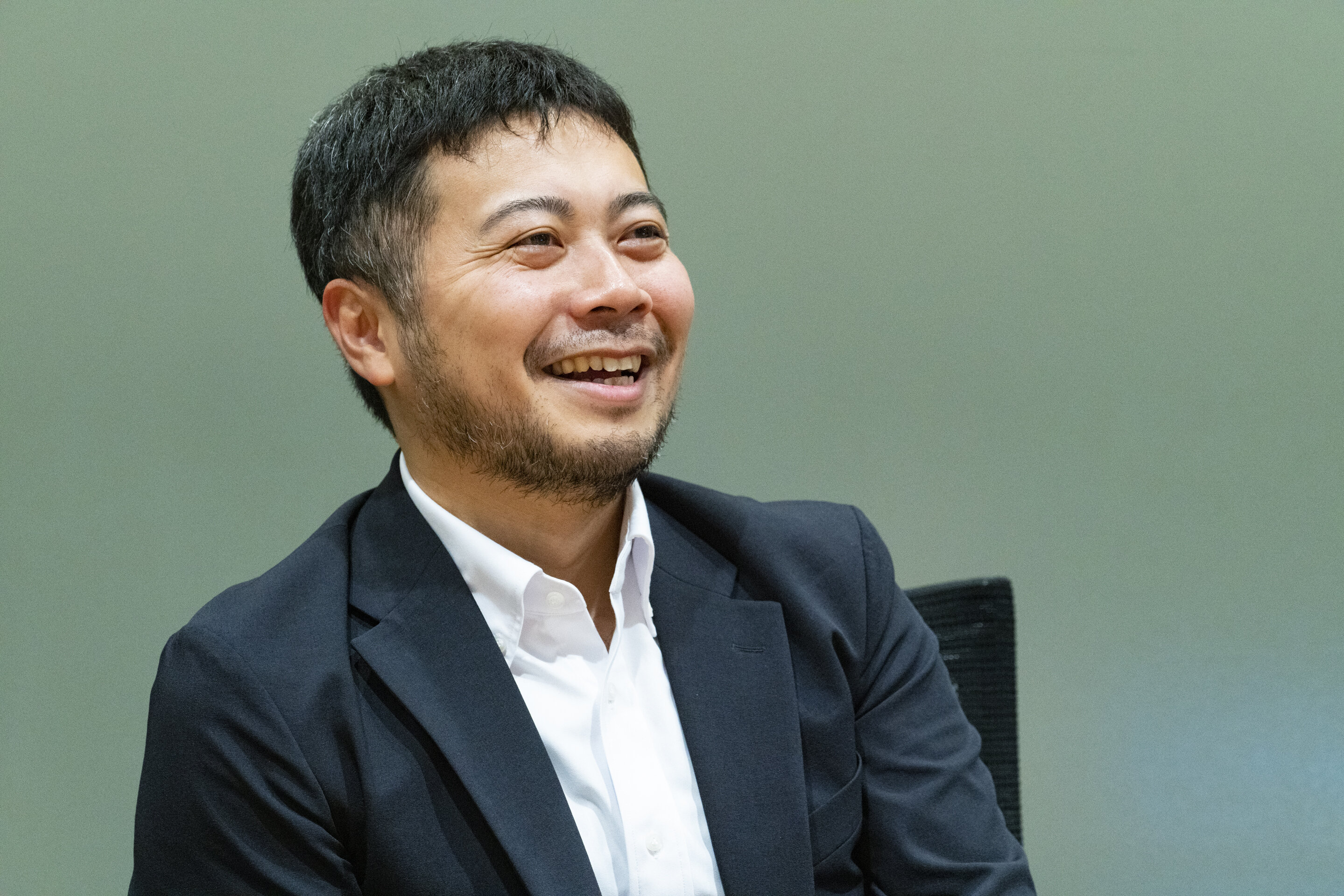
Comments from the investment professional in charge, Taira Kobayashi
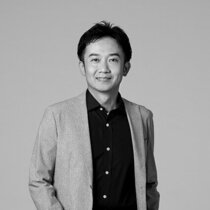 With the emergence of the CAR-T cell therapy blockbuster, cellular medicine is considered to have reached the next industrial stage, but there are still challenges to commercial mass production. Since its establishment, CellFiber has achieved the development of core technologies with its founder scientists and Ms. Adachi at the forefront, and the development of cell culture technology with Mr. Yanagisawa at the forefront, reaching an innovative technology that can supply high-functioning cells in large quantities in accordance with GMP. From here, we enter a stage where we prove both technological development (product creation) and global standard processes (knowledge creation) in parallel. We believe that the dedicated efforts of these two individuals will continue to lead and bring success to the expanded project, including new business promotion members, investor syndication, and government support. We will continue to give our full support to prove the standard technology for delivering innovative drugs to patients at a reasonable price.
With the emergence of the CAR-T cell therapy blockbuster, cellular medicine is considered to have reached the next industrial stage, but there are still challenges to commercial mass production. Since its establishment, CellFiber has achieved the development of core technologies with its founder scientists and Ms. Adachi at the forefront, and the development of cell culture technology with Mr. Yanagisawa at the forefront, reaching an innovative technology that can supply high-functioning cells in large quantities in accordance with GMP. From here, we enter a stage where we prove both technological development (product creation) and global standard processes (knowledge creation) in parallel. We believe that the dedicated efforts of these two individuals will continue to lead and bring success to the expanded project, including new business promotion members, investor syndication, and government support. We will continue to give our full support to prove the standard technology for delivering innovative drugs to patients at a reasonable price.

